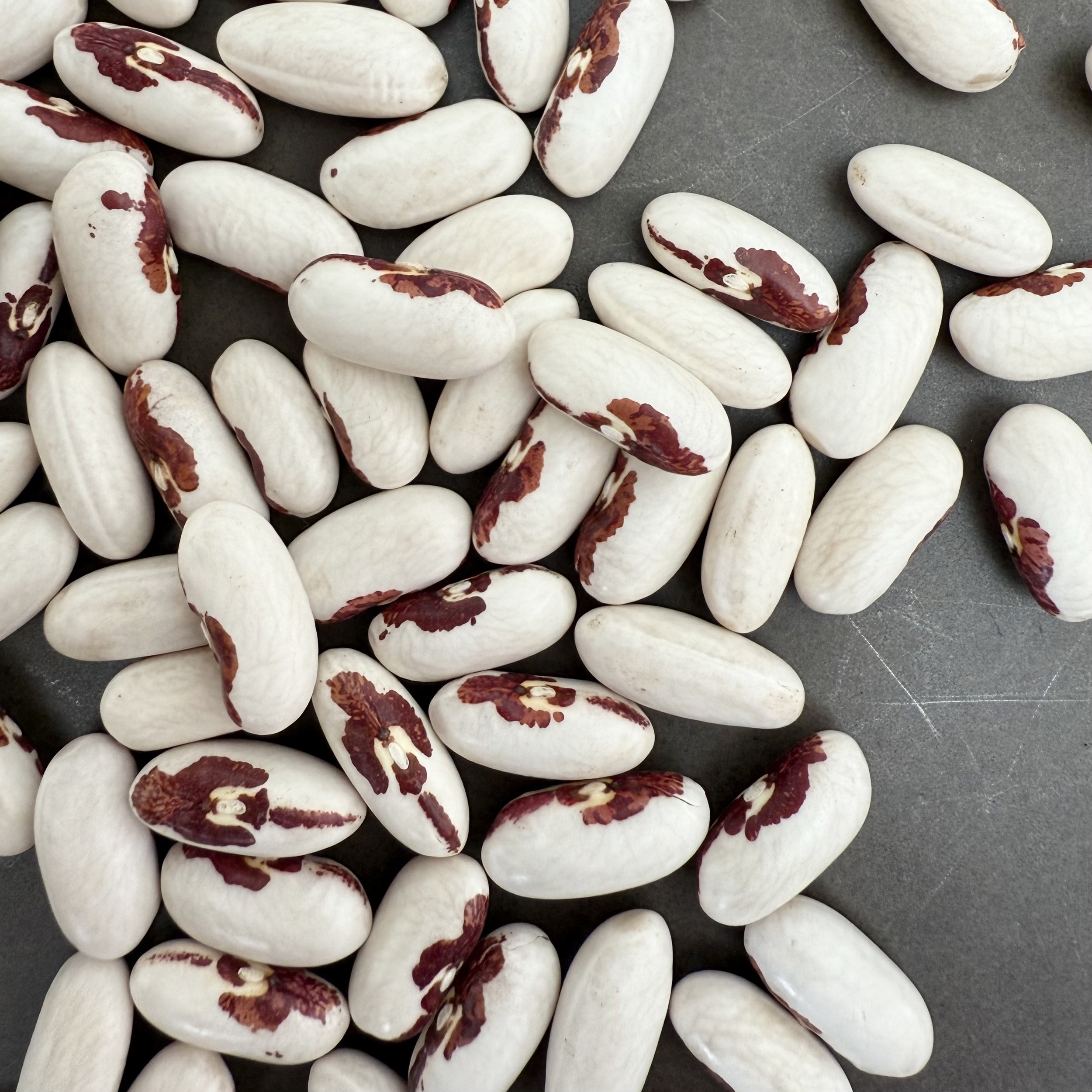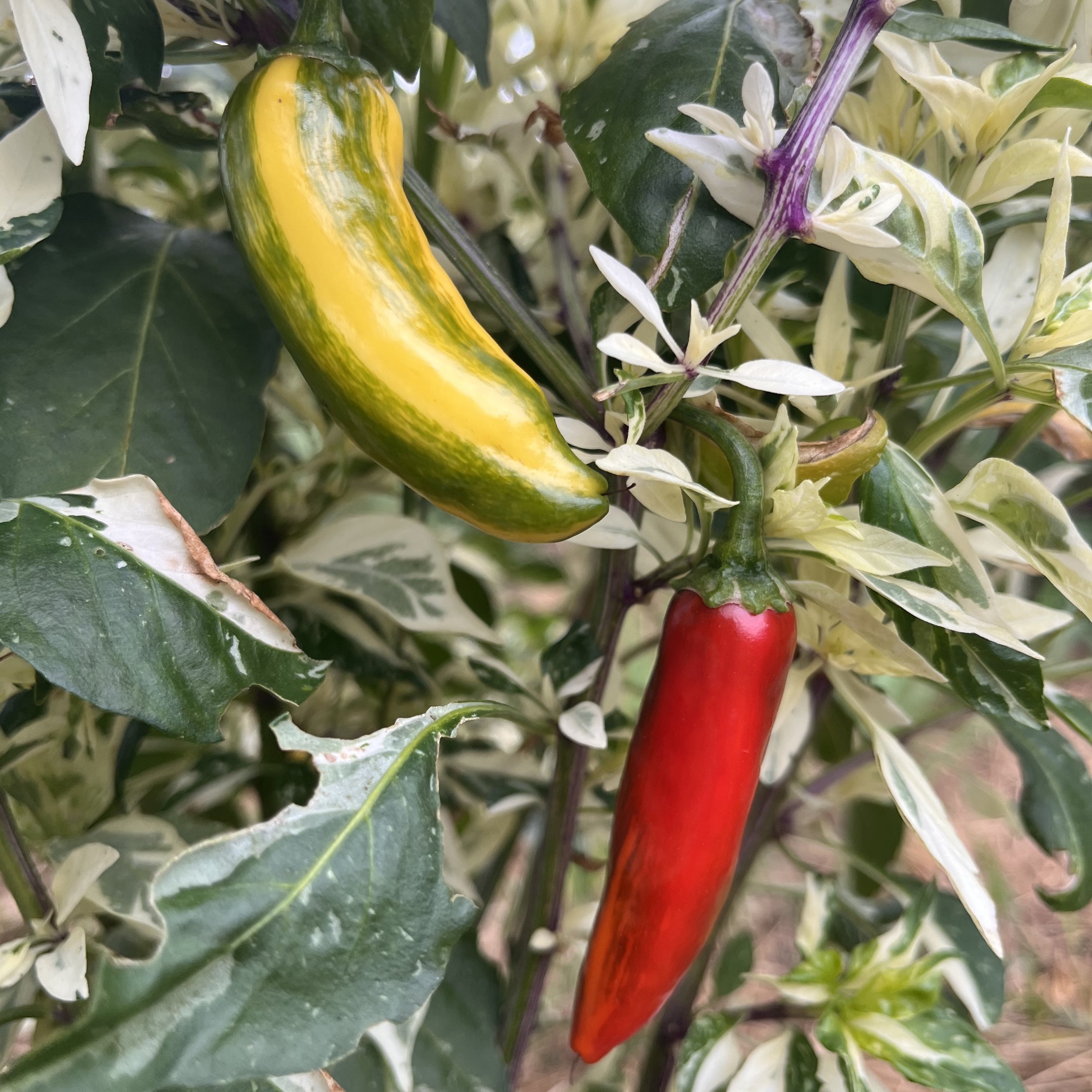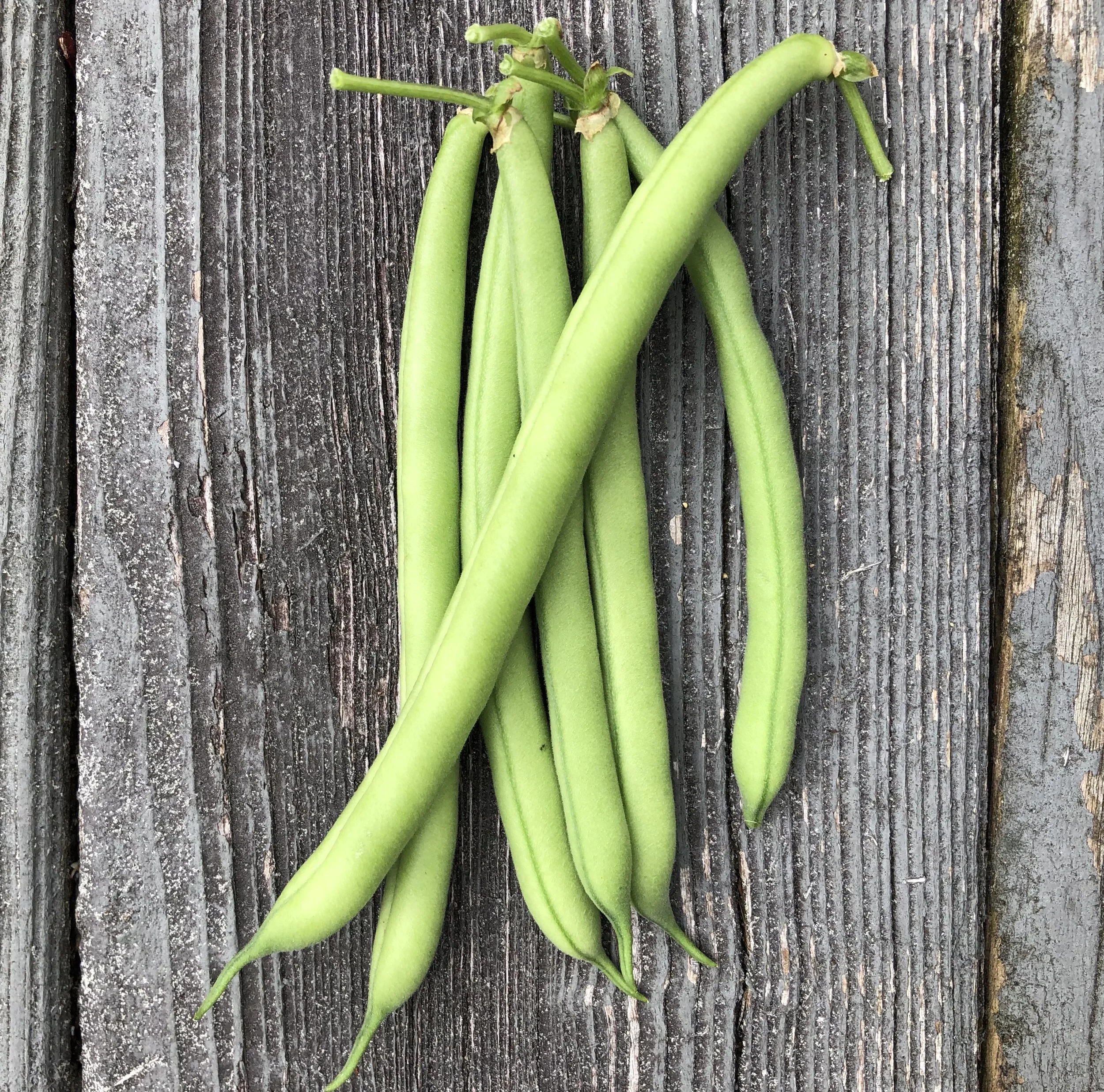 Image 1 of
Image 1 of


Bean, Soldier
Product Description: (Phaseolus vulgaris) Among the classic New England bean-hole beans (including Marfax, Yellow Eye, and Jacob’s Cattle), Soldier beans are regarded by some as the most authentic. Named for the reddish-brown silhouette of an 18th-century soldier around its eye, the cultivation of this white kidney bean can be traced as far back as the early 1800s.
Many distinct sub-types have emerged over the centuries, all with slight variations in size, color, and pattern. While many believe that it was first introduced to the United States from Europe, the Northeast has undoubtedly become its home, where it is beloved by all who’ve had the pleasure to grow it. Bush habit. Open-pollinated. 35 seeds per packet.
Growing Information: Plant outdoors in well-drained soil after all danger of frost has passed. Germination occurs best in soils 60 degrees F or above. Direct seed roughly 2 inches apart and 1 inch deep. Space rows about 3 feet apart. For succession plantings, 2-3 week intervals are most productive. Harvest as often as possible to encourage the growth of new pods. 85 days to maturity.
How To Save Bean Seeds
Allow the plant to dry out completely. Mature pods will be brown and brittle. Make sure that your plants are receiving adequate airflow to prevent excessive moisture and mold growth throughout the drying process. However, a small amount of mildew spotting on the outside of drying pods is completely normal and has no reason for concern. Once dry, harvest the seed pods and crack them open. Sort out any damaged, misshapen, or rotting beans. Continue the drying process if necessary then store them in a cool, dry place.
Product Description: (Phaseolus vulgaris) Among the classic New England bean-hole beans (including Marfax, Yellow Eye, and Jacob’s Cattle), Soldier beans are regarded by some as the most authentic. Named for the reddish-brown silhouette of an 18th-century soldier around its eye, the cultivation of this white kidney bean can be traced as far back as the early 1800s.
Many distinct sub-types have emerged over the centuries, all with slight variations in size, color, and pattern. While many believe that it was first introduced to the United States from Europe, the Northeast has undoubtedly become its home, where it is beloved by all who’ve had the pleasure to grow it. Bush habit. Open-pollinated. 35 seeds per packet.
Growing Information: Plant outdoors in well-drained soil after all danger of frost has passed. Germination occurs best in soils 60 degrees F or above. Direct seed roughly 2 inches apart and 1 inch deep. Space rows about 3 feet apart. For succession plantings, 2-3 week intervals are most productive. Harvest as often as possible to encourage the growth of new pods. 85 days to maturity.
How To Save Bean Seeds
Allow the plant to dry out completely. Mature pods will be brown and brittle. Make sure that your plants are receiving adequate airflow to prevent excessive moisture and mold growth throughout the drying process. However, a small amount of mildew spotting on the outside of drying pods is completely normal and has no reason for concern. Once dry, harvest the seed pods and crack them open. Sort out any damaged, misshapen, or rotting beans. Continue the drying process if necessary then store them in a cool, dry place.
Product Description: (Phaseolus vulgaris) Among the classic New England bean-hole beans (including Marfax, Yellow Eye, and Jacob’s Cattle), Soldier beans are regarded by some as the most authentic. Named for the reddish-brown silhouette of an 18th-century soldier around its eye, the cultivation of this white kidney bean can be traced as far back as the early 1800s.
Many distinct sub-types have emerged over the centuries, all with slight variations in size, color, and pattern. While many believe that it was first introduced to the United States from Europe, the Northeast has undoubtedly become its home, where it is beloved by all who’ve had the pleasure to grow it. Bush habit. Open-pollinated. 35 seeds per packet.
Growing Information: Plant outdoors in well-drained soil after all danger of frost has passed. Germination occurs best in soils 60 degrees F or above. Direct seed roughly 2 inches apart and 1 inch deep. Space rows about 3 feet apart. For succession plantings, 2-3 week intervals are most productive. Harvest as often as possible to encourage the growth of new pods. 85 days to maturity.
How To Save Bean Seeds
Allow the plant to dry out completely. Mature pods will be brown and brittle. Make sure that your plants are receiving adequate airflow to prevent excessive moisture and mold growth throughout the drying process. However, a small amount of mildew spotting on the outside of drying pods is completely normal and has no reason for concern. Once dry, harvest the seed pods and crack them open. Sort out any damaged, misshapen, or rotting beans. Continue the drying process if necessary then store them in a cool, dry place.





